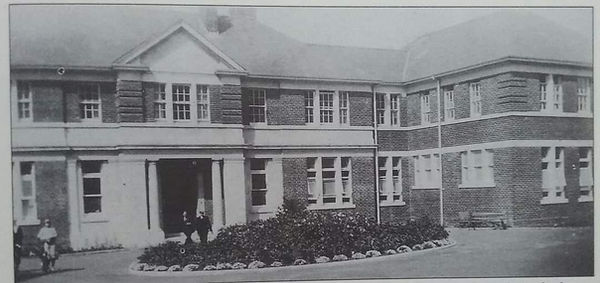
Mae gennym weledigaeth o le ble gall pobl leol o bob oedran ddod at ei gilydd, teimlo’n rhan o’n cymuned, dysgu gan ei gilydd a dathlu ein treftadaeth arbennig.
Mae arnom eisiau rhoi ‘r Glowyr yn ôl i’r gymuned!
Craft Wall
Our craft groups have shared some of their creations as inspiration. Please get n touch to find out more about our craft class, and things you can do from home until our doors open again.
Craft Wall
Amdanom ni
1911-1930
The Beeches was the residence of Mr. Frederick Piggott and his family from about 1911. Fred Piggott, originally from Lancashire, had come to South Wales in the 1890s to pursue his career as a mining contractor. He lived in Maesycwmmer and at other houses in St Martin’s Road, Caerphilly, before moving into The Beeches. He was responsible for the sinking of the shafts of Bedwas Navigation Colliery in 1912.
As the major collieries around Caerphilly (Llanbradach, Abertridwr, Senghenydd, Bedwas, Ystrad Mynach) came into existence in the years leading up to the First World War the need for better hospital provision for the injured and sick miners of the district became apparent. The competing pressure on beds in the Cardiff Infirmary from the casualties of war made the need more apparent. In 1917 the workmen, as members of the East Glamorgan District of the South Wales Miners Federation (known as The Fed), decided to pay a weekly levy of one penny towards the setting up of their own cottage hospital.
In August 1919 they had enough funds to purchase The Beeches from Fred Piggott for £5,000. The miners increased their levy to 2d and then 6d in 1920. With funds of nearly £30,000 they were able to equip the house as a functioning hospital, with 32 beds, and open it to receive its first patient on the 2 July 1923.
The Board of Management, consisting of delegates from the various collieries, extended the hospital to 84 beds to serve the needs of their families in 1930.
_JPG.jpg)

1932
By 1932 the job of Hospital Secretary had become too onerous to be performed on a voluntary part-time basis. John (better known as Jack) Roach, previously a miner and Fed official, was appointed to the post. He performed his duties in an extremely able and energetic fashion for the next thirty years.
The Hospital employed its own nurses and domestic staff. Local GPs looked after some of the patients but the consultant surgeons, based in Cardiff and Newport hospitals, visited as required and received their fees accordingly. There was a busy outpatients department and X-ray and massage facilities.
1939-1950
The miners jealously guarded their ownership and control of the Hospital. There were strict rules regarding who they allowed to become subscribers and users of the services provided. This situation started to change, slowly, when the country went to war again in 1939. The Government, acting under emergency powers, made the Caerphilly Miners Hospital, along with all other voluntary and public hospitals, relax its rules. Civilians who suffered from the German bombing of London, Cardiff and Swansea, were admitted. Government money was forthcoming to enable the Miners to meet these heavy responsibilities. The Board of Management took over the Masonic Hall, the Wesleyan Hall and the Van Hotel as annexes to the main hospital.

The next wave of outsiders to be accommodated were the servicemen who returned wounded after D-Day in 1944.
In October 1945 the Board of Management purchased Redbrook House, a large property in St Martin’s Road, to serve as a Nurses Home and base for nurse training.
With the newly elected Labour Government in power, the recommendations of the Beveridge Report, and Aneurin Bevan as Health Minister, the move to group the nation’s hospitals into a more rational system of healthcare gathered pace, culminating in the creation of the National Health Service on the 5 July 1948. The Caerphilly Miners’ Hospital ceased to be the property of the local workmen. Prior to this date the Board of Management had been working towards opening a Maternity Unit to fulfil a long felt need; a 14 bed Unit opened in 1950.
.png)


